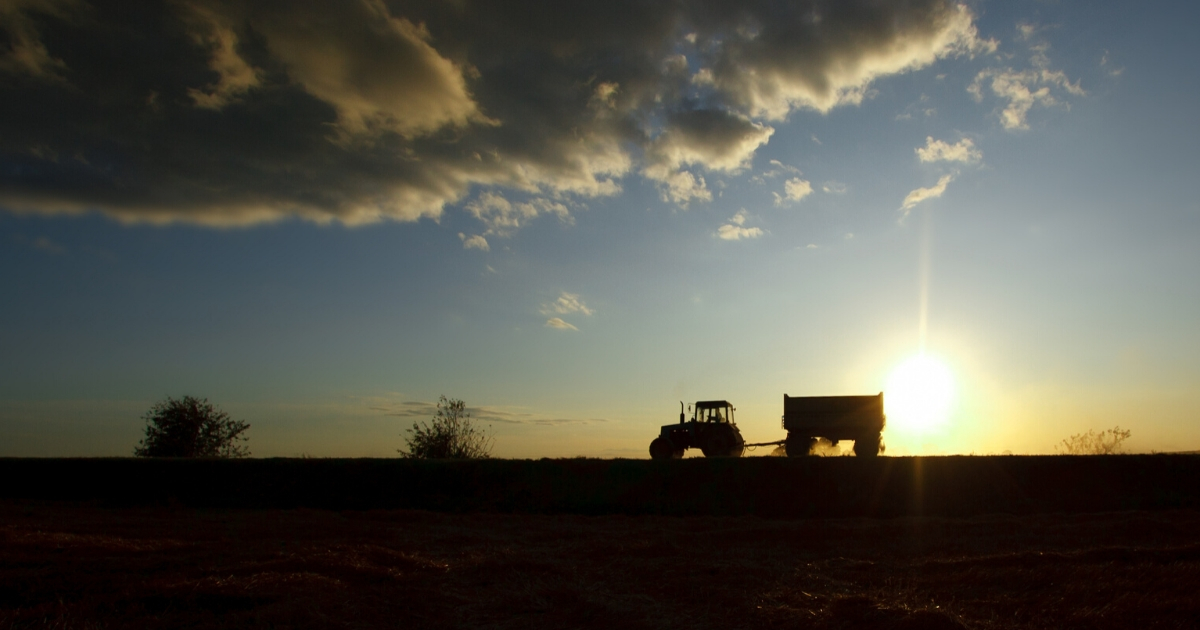
Farm equipment on the move

Farm Equipment on the Move
Delaware drivers are urged to stay alert and be patient.
by Laurie Wolinski, May 2020
Delaware’s roadways are not too busy these days, especially compared to last year. As we continue to practice social distancing at home, the roadways are missing a sizable portion of commuting cars. However, one particular group is still out on the road: our local farmers, farm employees, and farm service providers!
Right now, farmers are preparing their fields and planting the crops that we consumers will soon purchase at local grocery stores and farmers markets. Throughout winter, our farmers have been working on their equipment to ensure it is in the best condition for the planting season and over-the-road travel. Tractors, planters, plows, wagons, grain trucks, combines, fertilizer equipment...you will likely see these driving on roads across the country from now until the end of November.
A little patience will go a long way toward protecting the safety of both our family and our farmers.
Safety around these massive pieces of equipment is essential. They are often large and slow-moving, requiring more than a single lane and a wide clearance to make turns. (The maximum tractor speed on the road is only 25 miles per hour!) Additionally, farm equipment is loud and can drown out normal traffic noise. That means it’s difficult for equipment drivers to hear you (or your car horn). And because of commercial and housing developments, farmworkers may have to travel many miles on major roadways between their farms and fields. The only way for them to do this is by using public roads. Please practice patience and be prepared to share the road from now through fall.
We know this can be frustrating ...
Picture yourself driving along in your car on a county road with a narrow shoulder. It is a lovely sunny day, your radio is playing and you are on your way to the grocery store. But as you drive, you come upon a large, slow, vehicle with flashing amber lights. Within seconds, you approach a tractor pulling a planter, traveling at ONLY 25 miles per hour. Your car is moving at 55 mph. You look beyond the tractor and see a long line of traffic traveling from the opposite direction. You grumble a bit because you will have to apply your brakes quickly. Ugh…there is no chance to pass…yet.
The tractor driver is hugging the (right) white line of the traffic lane. Why will this tractor not move to the shoulder? Rest assured, the driver is not trying to ruin your day. Farm equipment is discouraged from riding on the shoulder as it could result in hitting a pothole and damaging the equipment, or worse, losing control and causing a traffic accident.
As you continue to drive, there is soon a small opening in the traffic coming toward you, so you consider passing the tractor. After all, you have a long line of cars behind you, too! But please reconsider. This is not a safe practice and your life is not worth the gamble! Instead, wait until there is a significant break in opposing traffic or until the farm equipment can move over and allow you to pass (they are looking out for you, too)!
It may be frustrating to be stuck in traffic, but it is important to practice safety and show respect to the farmers who work to provide food for our tables. A little patience will go a long way toward protecting the safety of both your family and our farmers.
Tips for driving behind farm equipment:
Keep an eye out for farm equipment, especially in rural areas.
Follow behind slow-moving farm vehicles at a safe distance in case you need to stop quickly.
Pass the vehicle only when it is completely safe and you have the right of way.
Offer a friendly wave to the driver as you pass!
